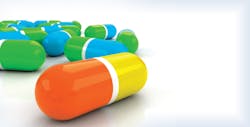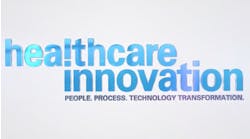The pharmaceutical and life sciences industry continues to experience unprecedented transformation with the influence of a changing healthcare regulatory landscape, mergers and acquisitions; stagnant research and development; and the introduction of value-based medicine. Today, just discovering an innovative drug does not necessarily make it an economically viable product. Companies need to find ways to communicate clinical and economic benefits to healthcare stakeholders, and make a stronger case to convince them to use the drug.
At the same time, these industries are also seeing an explosion in the availability of ‘real-world’ data from various sources other than the traditional (and often limited) clinical study data. These sources include electronic health records (EHR), claims information, physician notes, lab summaries, drug data, consumer mobile apps, wearables, sensors, etc. This ‘big’ data can potentially become a pivotal tool to demonstrate the efficiency of the treatment in populations. Its analysis also allows for innovations to be appropriately priced in the market as part of outcomes research.
The evolving healthcare space provides us with a few unique opportunities where organizations can leverage healthcare big data to drive greater efficiencies in quality and cost.
Strengthening health economics and outcomes research (HEOR)
Health Economics and Outcomes Research (HEOR), which makes use of real world data, can find great applications of, and consequently a lot of value in, using big data technologies. While HEOR used to be a supporting discipline, it is now becoming an important independent process in pharmaceutical and medical device organizations. For effective health economics, epidemiologists and statisticians should be able to mine real world data, such as EHR and claims databases, and derive valuable insights to establish product value.
Targeting drugs at specific patient populations
Life sciences and pharmaceutical companies can use big data technologies to aggregate and analyze clinical data from provider applications, registries and public health studies. The aggregated data can be used to identify and classify specific groups of patients based on their conditions, clinical processes and health outcomes. Using big data technologies on this real-world data could help accurately define these groups, as well as effective treatment patterns.
Combining clinical data with drug data (e.g. dosage, adverse effects and safety information) can unveil interesting trends in the effectiveness of products and services in certain sub-populations that show a superior or unexpected response. Big data analytics could be used to identify underserved patient populations and also assess the effectiveness of drugs already in use across different patient groups.
Accelerating development of new drugs
Drug repositioning is emerging as a big opportunity to reduce the time to market for drugs. Combining publically available big datasets and sponsors’ internal databases can help with targeting drugs for new indications or patient populations. This whole process can save a lot of time and money used for proving the safety and efficiency of the drug candidate.
Improving patient recruitment and retention in clinical studies
Big data analytics can be used on a de-identified patient and investigator data to create meaningful insights for researchers. Analytics can also help identify various problem areas such as study design, trial dropouts’ protocol adherence, etc. Researchers can also use analytics to identify hidden patterns in patient data, assess risks and influence the success rate of clinical studies through timely interventions. For example, estimating the minimum number of patients required to meet the trial’s statistical end-points or analyzing similar protocols used in earlier studies to predict future patient retention rates.
At the same time, using big data effectively comes with its own set of challenges, including data diversity, accessibility, aggregation, standardization, storage and security across multiple data types, sources and models
Getting the data together
There are three different categories of data:
- Structured data from EHRs, and drug databases
- Unstructured data from physician notes, clinical case summaries
- Semi-structured data from CRO reports, etc.
Pharmaceutical companies could use data from varied journals, articles and databases to gain insights about drug licensing, and extrapolate the information to identify molecules that have greater probability of success. The information presented in all these varied data sources needs to be considered and assessed for decision making. The major challenge in this situation lies in harmonizing these varied data sources, wherever they may be. It becomes extremely difficult to have a single solution that adequately integrates and manages all these data types and formats.
Managing data security concerns
Since the data in question here is patient and health information, it is bound by security and privacy concerns. Healthcare data is bound by HIPAA regulations, so accessing, storing and converting this data for analysis remains a challenge. Although data can be de-identified by removing patient names and other personally identifiable information, it is still debatable what the minimum personal information required to generate relevant insights for clinical research happens to be.
Finding big data skills – both technology and domain
As life sciences and pharmaceutical companies start investing in technology and tools for big data processing and analytics, they will also need to build strong capabilities across a large number of technology areas such as Hadoop, MapReduce, EDW, ETL, visualization tools, machine learning, Natural Language Processing, etc. They will also need to find professionals with a combination of healthcare domain knowledge (processes, standards, clinical data) and statistical techniques and tools (e.g. data mining, data science, information architecture and predictive models).
While these challenges exist, big data is continuing to gain ground in the life sciences and pharmaceutical industries. These companies need to recognize the immense potential that big data technology holds in accelerating research and design and fueling next-generation research. Technology organizations in this space also need to understand their role in creating viable solutions that enable faster drug discovery and accelerate time to market.


